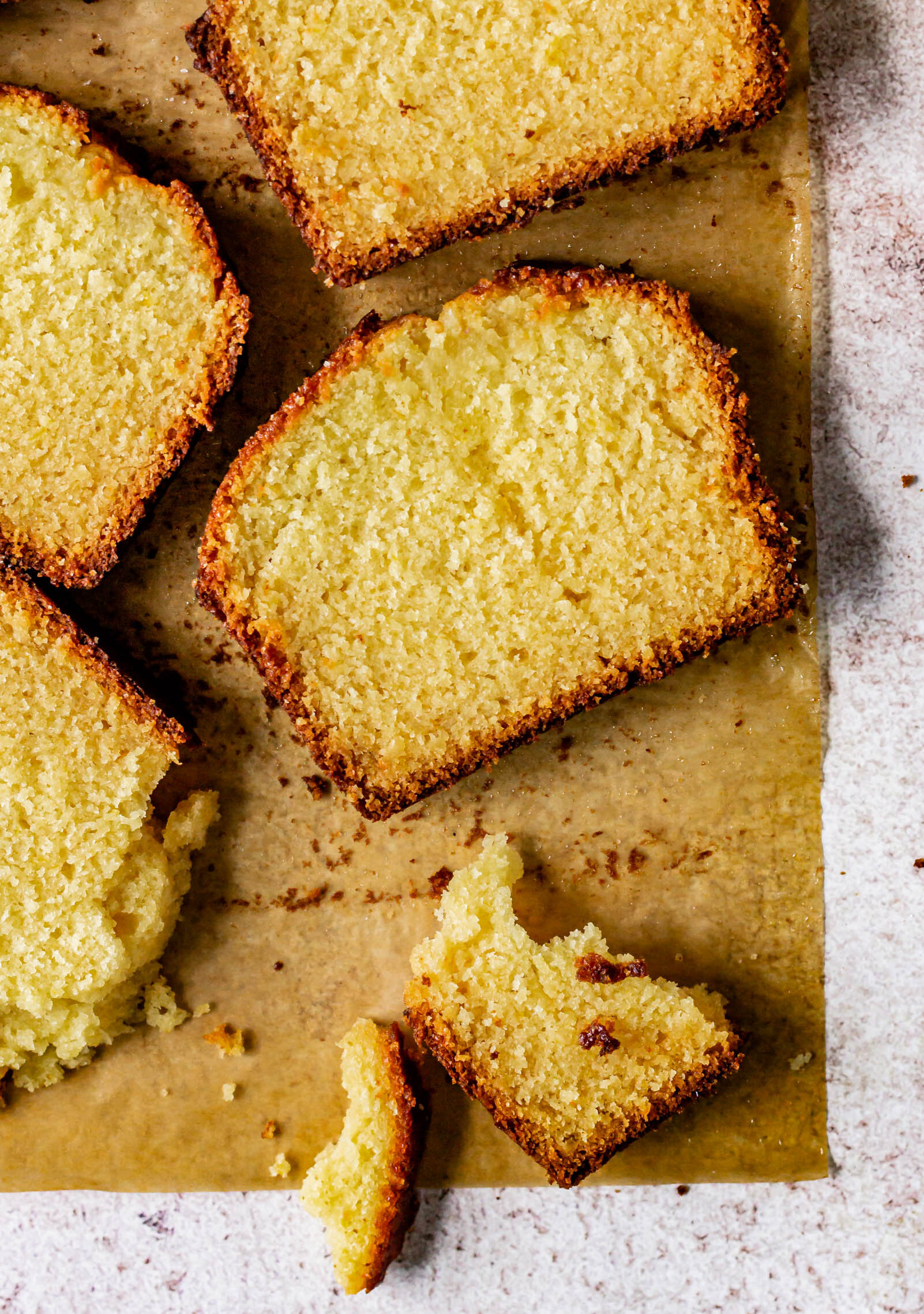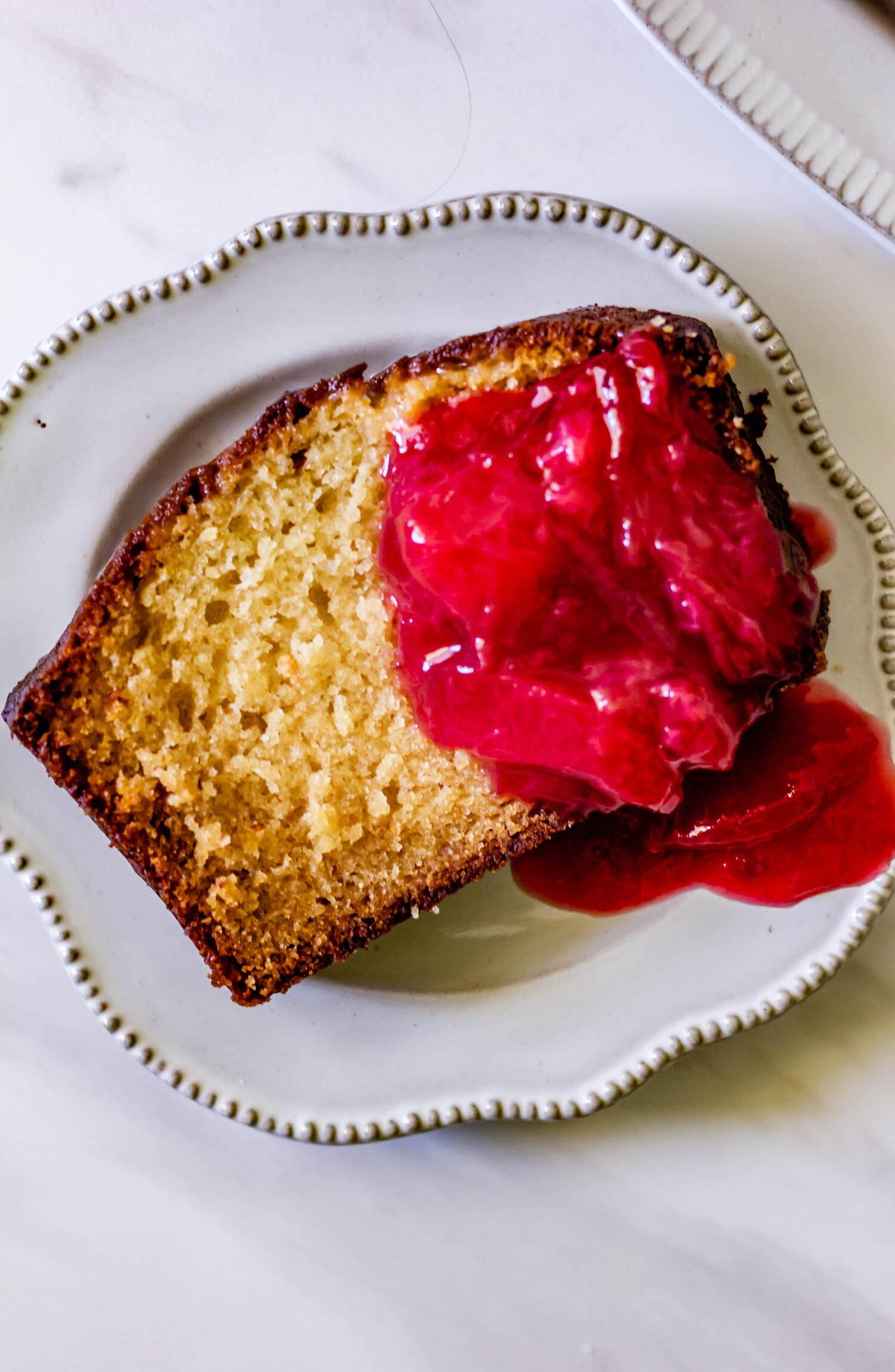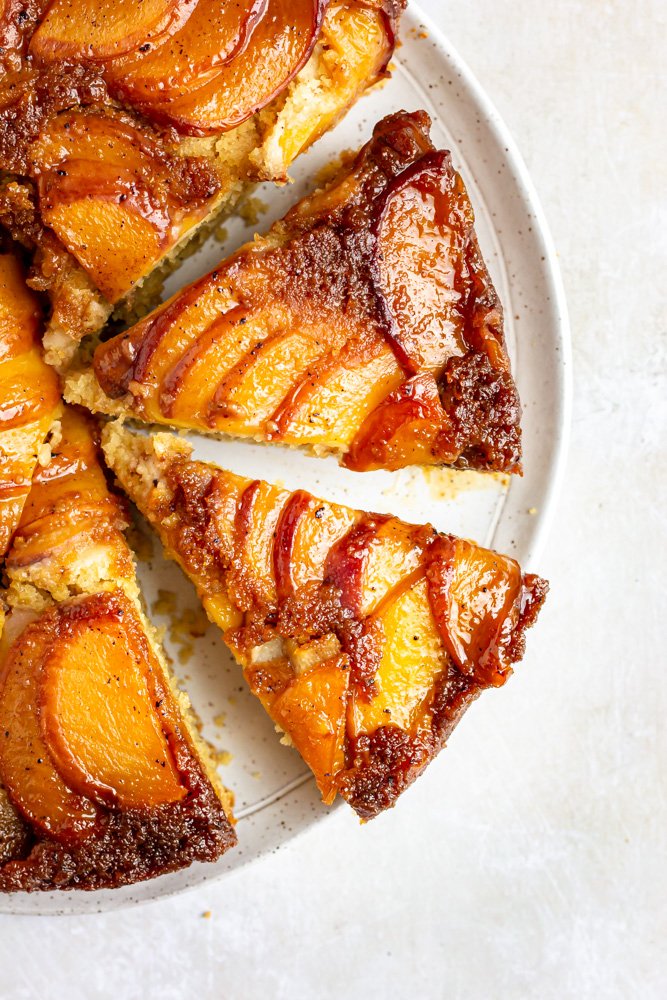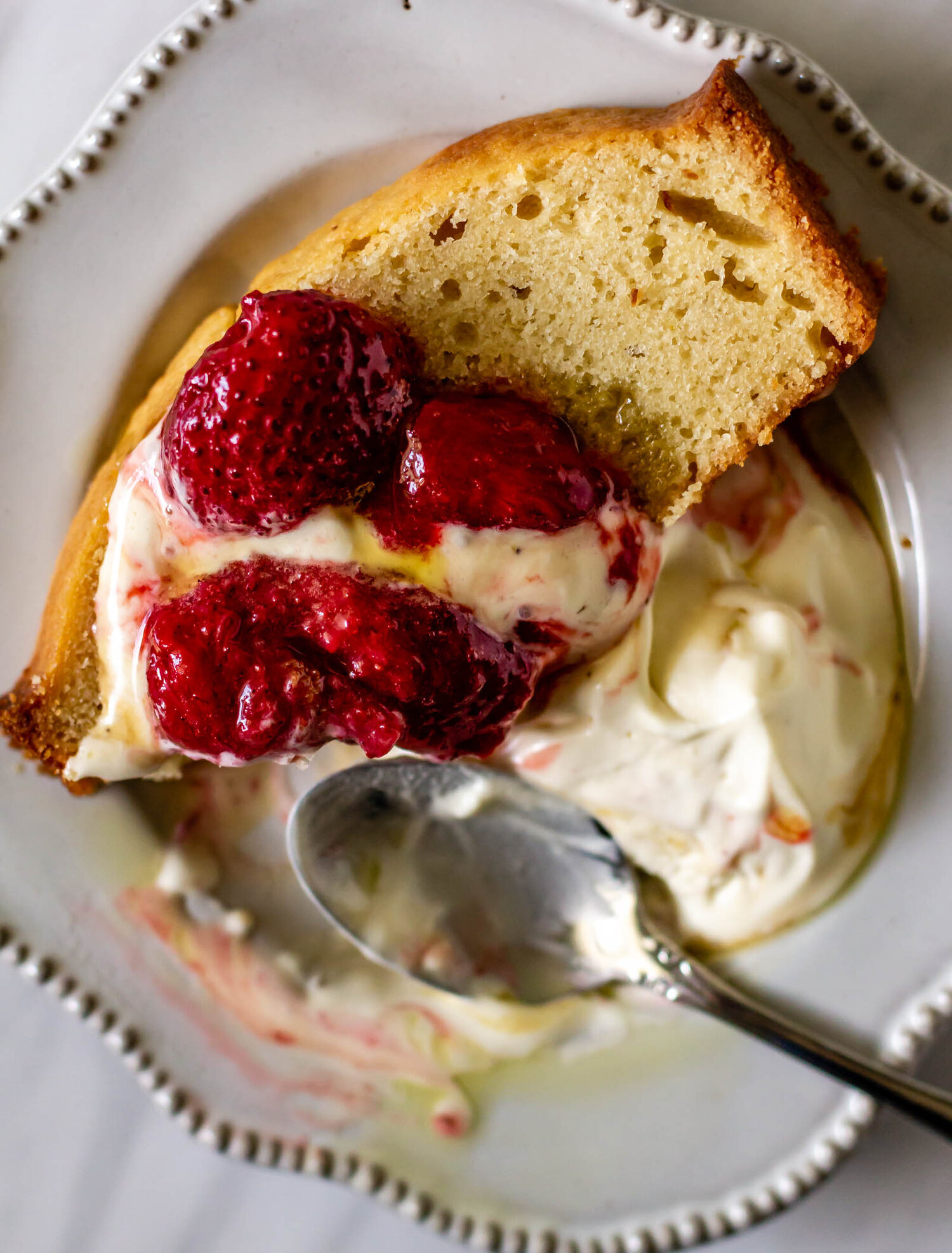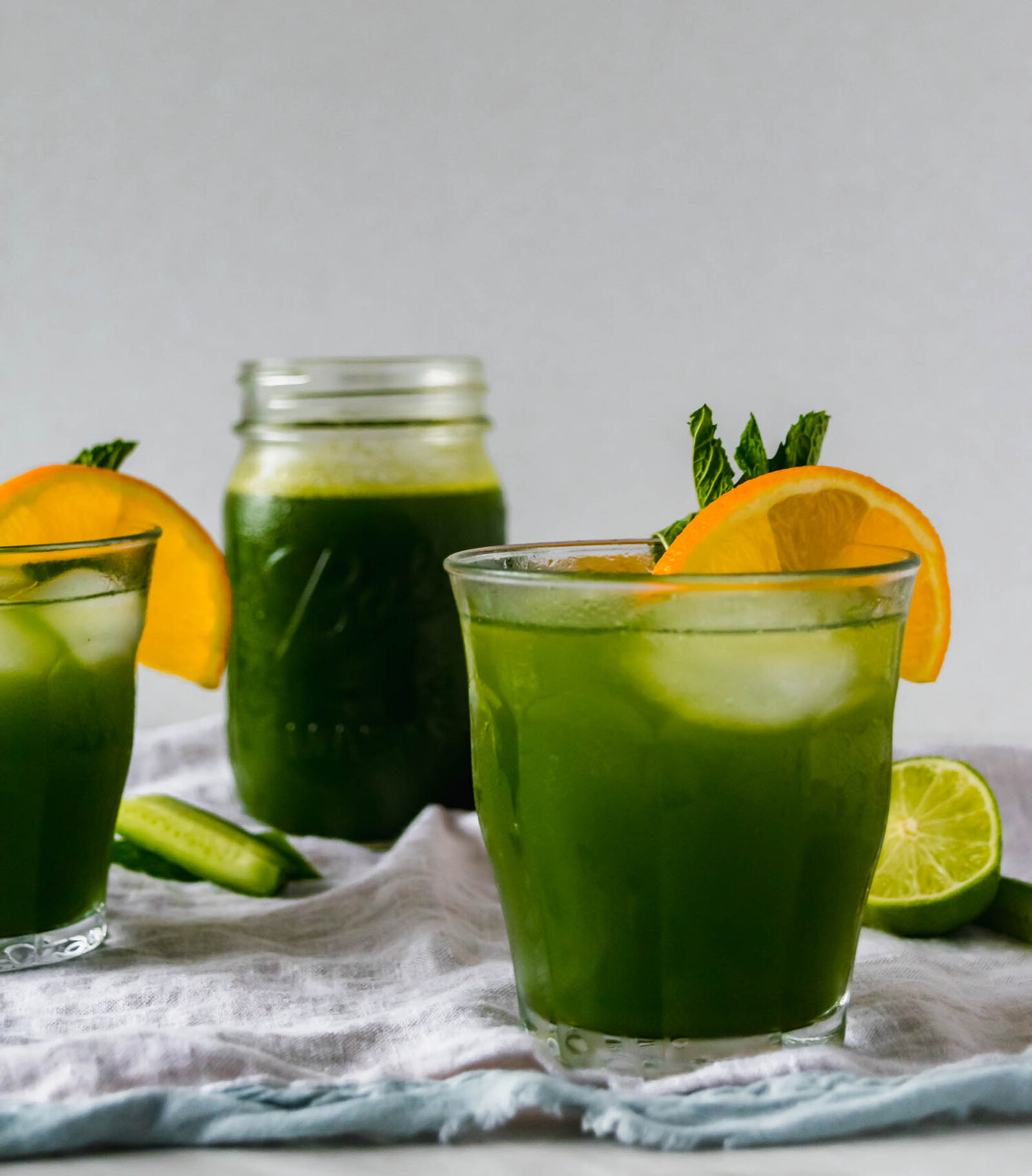Honey Lavender Orange Loaf Cake
/This simple honey and orange loaf cake recipe is drizzled with a lavender simple syrup. Plus, recipe includes tips for making a great loaf cake and advice on how to adapt your cakes based on the fruit and florals you have on hand.
The large majority of my recipe ideas come from me trying to figure out what to do with random ingredients that are left hanging out in my fridge or pantry. Being a recipe developer, I’m often left with deli containers filled with small scoops of custards, syrups, or ganaches that I’m continually working to repurpose. I am also passionate about cooking and baking with as much in-season produce as possible, a habit that regularly leaves me buying more fruit than I need just because they are in season and oh so pretty. This is how this honey lavender and orange loaf cake came to be. A scrap bake at its finest.
You guys know how much I love teaching fundamental baking. For so many, baking can be scary and rigid and needs specific ratios and times in order for things to turn out correctly. While this is somewhat true, once you understand the roles that ingredients play in a product, baking can be creative and inspired and uniquely your own. I’m so passionate about this idea, that I wrote an e-book on it and I teach virtual baking classes to help you gain confidence and learn how to adapt baked goods to suit your refrigerator.
a very simple loaf cake
Loaf cakes are a great back-pocket bake. Because of their shape and density, they hold moisture well and last a bit longer than individual bakes, like cookies and brownies. They are also a great travel bake—it’s easy to wrap a slice up and take it on the road with you. They are also fairly straightforward, utilizing ingredients you probably already have in your pantry, like flour, butter, sugar, and eggs. This makes them the perfect vessel for flavor adaptation.
how to adapt your loaf cakes
You can definitely use this recipe as is and it will turn out beautifully. The honey lavender syrup complements the floral orange flavor in a way that shouts “spring is here”! But because I’m invested you experimenting and playing with flavors in your kitchen, here are a few ways you can adapt this recipe.
The fruit
Citrus is a great baking fruit because you’re able to use all of the components: fruit, zest, and juice. You can easily substitute another citrus fruit, like lemon or lime, in place of the orange in this recipe. You can also fold in whole fruits, like raspberries, strawberries, or blueberries. Simply omit the orange zest, replace the orange juice with milk or buttermilk, and fold your berries in just before pouring the batter into the pan.
The syrup
You can swap the lavender for pretty much any herb or flower that you like. If you want to omit the honey flavor, make a sugar syrup by replacing the honey with sugar and simmering until all of the granules have dissolved. Soaking a cake in a flavored syrup contributes both moisture and flavor to your final baked good.
a few other scrap-baking projects to explore:

Honey Lavender and Orange Loaf Cake
Ingredients
- 1 cup of honey
- 1 cup water
- 2 tbsp lavender buds
- 1 cup (226 g) unsalted butter, softened
- 1 cup (200 g) granulated sugar
- 1/4 cup (85 g) honey
- 1 large orange, zested
- 3 eggs
- 1 3/4 cup (220 g) all purpose flour
- 1 1/2 tsp baking powder
- 1/4 tsp kosher salt
- 1 cup freshly squeezed orange juice
- 3 tbsp whole-milk, plain yogurt
- 1/4 cup honey lavender syrup
Instructions
- Combine honey, water, and lavender in a small saucepan and cook over medium heat until mixture is bubbly and fragrant. Remove from heat, cool, and strain out lavender buds. Store syrup in the fridge for up to a week.
- Preheat oven to 350° F and line a loaf pan with parchment paper. Set aside.
- In a medium bowl, whisk together flour, baking powder, and salt. Set aside. In a small measuring cup, whisk together yogurt and orange juice and set aside.
- In the bowl of a stand mixer fitted with the paddle attachment, combine butter, sugar, honey, and orange zest. Cream for 3-4 minutes, until mixture is light and fluffy. Scrape down the sides of the bowl.
- With the mixer on low speed, add eggs one at a time, mixing thoroughly after each addition.
- Gradually add the dry ingredients in three additions, alternating with the yogurt/orange juice mixture. Mix until just combined and no dry streaks remain. Fold the batter a few times with a rubber spatula to ensure everything is well-mixed. Pour batter into the prepared pan and bake for 50-60 minutes, until cake is deeply golden brown and a knife or toothpick inserted in the center comes out clean.
- Prick the warm cake with a fork and pour honey lavender syrup over the cake. Let cool completely before removing from the baking pan and slicing.
Notes:
This recipe makes more honey lavender syrup than you need for the recipe, but that's okay because it's so versatile. I love to add it to cocktails and I drink it in my iced coffee all summer long.




